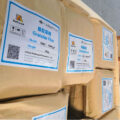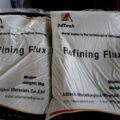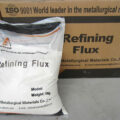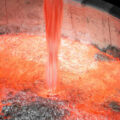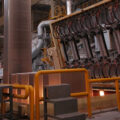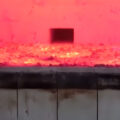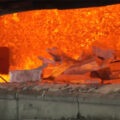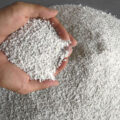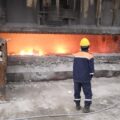Aluminum Smelting and Refining: In the process of aluminum alloy smelting, a refining agent is added to the furnace for processing, so it is called “refining”. In aluminum and aluminum alloy melts, refining agents can remove metal impurities, oxides and other oxide inclusions from the melt through physical, chemical or physical-chemical interactions. It is determined by the adsorption and dissolution of the refining agent on the oxide inclusions in the melt and the chemical interaction between the refining agent and the impurities in the melt.
The smaller the interfacial tension between the refining agent and the inclusions, the better the adsorption of the refining agent. Some metal impurities in the aluminum melt are difficult to remove during the smelting process. These impurities can only be strictly limited in the raw materials, such as silicon, iron and other impurities. The other metal impurities, such as calcium, zinc and other metals, will adversely affect the properties of aluminum alloys. These harmful impurities should be removed before smelting or casting.

Aluminum Smelting and Refining
In the process of refining and transportation of molten metal, foreign matter such as oxide scale, intermetallic compounds, and hearth fragments are easily brought into the molten metal to form non-metallic inclusions. These non-metallic inclusions are mainly oxide inclusions. According to the different formation period in the melting and casting process, it can be divided into primary oxide inclusions and secondary oxide inclusions.
Primary oxide inclusions mainly refer to all oxide inclusions formed before molten aluminum is poured. The secondary oxide inclusions can be divided into two categories according to their shapes: one is the large inclusions with uneven distribution in the macrostructure, and some kind of inclusions make the alloy structure discontinuous and reduce the air tightness of the workpiece, which becomes the source of corrosion. Reducing the strength and plasticity of aluminum alloys often becomes the source of cracks in parts. The second type of oxide inclusions refers to small, dispersed inclusions, which cannot be completely removed even after careful purification. It increases the viscosity of the molten metal, reduces the feeding ability of the molten aluminum during solidification, and easily causes shrinkage of the casting.
Secondary oxide inclusions, also known as endogenous inclusions, are mainly formed during the casting process. The endogenous inclusions are generally distributed more uniformly and the particles are smaller. The splashing of molten aluminum during the pouring process, the turbulence is that the aluminum oxide in the sand mold interacts with the water in the molding sand, and the water is decomposed into oxygen and hydrogen. Oxygen reacts with aluminum to form oxide inclusions, and hydrogen decomposes the molten aluminum.
Impurity Removal Method
Vacuum treatment is to use impurity elements whose boiling point is lower than that of aluminum (boiling point is 1800°C) and the main components of aluminum alloy under vacuum conditions, and remove them by evaporation.
Harmful impurity elements can chemically react with the refining agent to form compounds that can be separated from aluminum and are carried into the refining slag and discharged through the adsorption of the refining agent.

